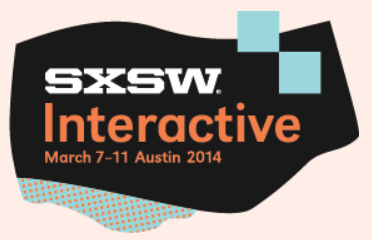Wearables Helping People With Disabilities – A SXSW Talk
Readers of this blog and of my syndicated reports know that I’ve spent a great deal of time lately researching and analyzing the market for wearable devices and the emerging wearables ecosystem. I’m excited to announce that I’ll be co-presenting a talk at SXSW with Jen Quinlan (Twitter: @QuirkyInsider) about a specific sub-segment of the wearables market – how wearable devices, in concert with the Internet of Things, can help people overcome various sorts of disabilities.

Jen conceived of this talk, and was kind enough to invite me to collaborate with her. And I was thrilled, particularly when I heard about the topic she had proposed. Why? I’m interested – and hope you will be too – because:
- Wearables are moving deeply into healthcare. Understanding how wearables can help people with disabilities fits into a larger analysis of how wearables are reshaping healthcare. Fitness wearables, I have asserted, will grow beyond the individually-purchased, consumer-oriented market to become healthcare wearables – monitoring systems fully embedded into the healthcare system. Fitlinxx’s business model shows that selling through hospitals, insurance carriers, and corporate wellness providers creates value for consumers: their doctors can see the results of wearable monitoring, and in some cases they can receive discounts on their health insurance. Google’s partnership with VSP also shows how wearables are integrating into normative healthcare institutions.
- Not all wearables users fit the same body type – nor should they. Much of the early adopter zeitgeist around wearables focuses on hale, attractive, young, often white and male users – the marathoner quantifying his performance times during training or the professional in a suit testing out a Google Glass application. While neither Jen nor I are members of the community of people with disabilities, we both see this standard early adopter profile as deceptive. Many people outside the early adopter profile are benefitting from wearables, and their usage experiences are informing new innovations. And many more will do so in the future. We want to tell the story of why this is important.
- Startups need guidance, and the current prevailing wisdom isn’t right. During my research conversations, I’ve heard from entrepreneurs who started their wearables journeys with a focus on helping people with disabilities, but who abandoned the efforts in favor of what they perceived to be a larger total addressable market. We want to identify some of the legitimate obstacles to developing wearables for disabilities, but to also recontextualize the conversation by looking at the true market opportunity.
We’ll be telling some stories of real users whose lives have benefitted from the use of wearable technology. At the same time, we will offer guidance about how to overcome the barriers to spending time on this audience and its needs – and how a product development focus on people with disabilities can actually reach a large and growing market of potential users.
Twitter discussion: Note that there will be a Twitter hashtag – #wearableshelp – associated with our talk and its content, along with Jen (@QuirkyInsider) and my (@jgownder) usernames.
Here are the full details of our talk. Attendees of SXSW, we hope to see you there!
Date: Monday, March 10
Time: 11:00AM – 12:00PM
Venue: Hyatt Regency Austin, Texas Ballroom 1-4
J. P. Gownder is a vice president and principal analyst at Forrester Research serving Infrastructure & Operations Professionals. Follow him on Twitter at @jgownder.
